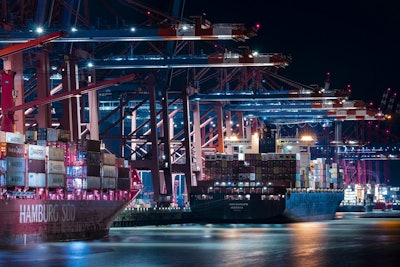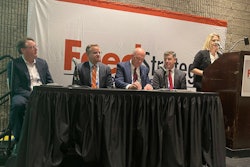
In January 2018 in New Orleans, the National Grain and Feed Association (NGFA) and several grain industry companies got together and decided to address the need for digitizing the process for trading, applying and transferring ownership of barge-loads between companies.
After a three-day work session in October 2018, these companies and the NGFA began working toward a solution to digitize the thousands of documents created each year, including scoping of the project and design and development of a prototype.
The Barge Digital Transformation (BDT) platform was officially launched in November 2020, and the National Grain and Feed Digital Solutions (NGFDS) was established to oversee and administer the platform.
Brittany Batz, project manager for NGFDS, says the BDT system does what they set out to do — digitally handle the trade string and documentation process of the barge trade.
“The industry-driven system digitizes the negotiable barge bills of lading that NGFA members process each year,” she says.
How it works
NGFDS partnered with essDOCS to implement a customized version of its CargoDocs DocEx platform that will digitize barge trading documents so that they may be transmitted electronically.
The new platform digitizes the tens of thousands of negotiable barge bills of lading (BOL) that are processed each year.
Users in 2020/21 paid $5 per transaction, which is defined as when the BOL gets transferred. According to NGFDS, this is comparable to the expedited delivery charges that users incur in the trade today. Records are retained in the system for 12 years.
Batz says the two main benefits of using the BDT system are cost and time savings.
“The system eliminates the need to overnight paper BOL, which reduces the cost of expediting fees,” she explains.
“The system is also a repository for all documents related to a barge which increases the efficiency of the settlement process and allows companies to send and receive payments in a timely manner.”
In addition to drastically reducing the paperwork associated with the barge trade, the system also reduces the manual entries needed to process a BOL.
“The system, with one entry, establishes a barge load into the pipeline, which can then be efficiently exchanged in a user-friendly interface,” says Batz.
APIs (Application Programming Interfaces) have also been developed for the system which allow companies to connect to the BDT System and transfer real-time information of barge data to update internal systems, says Batz.
Overcoming first-year challenges
Batz notes the platform had two challenges its first year: making sure they had a good system and getting companies to sign on to use it.
As of December 2021, 51 total companies (38 shippers and 13 carriers) were using the system.
Familiar names include American Commercial Barge Line (ACBL), American River Transportation Co., ADM, Bunge, Cargill, CGB, CHS, Gavilon, Heartland Co-op, Ingram Barge, LDC, Owensboro Grain Co., Scoular, The Andersons and Zen-Noh Grain Corp.
A full list of all companies can be found by visiting ngfds.org/bdt-customer-network.
“The launch of the system in November 2020 went as realistically smooth as it could have,” says Batz. “We started with corn to test the system before adding other commodities. While there were a few bugs to be worked out, we were able to roll out all target commodities on the system within the first year.”
Currently, the system is live for corn, soybeans, wheat, DDGS, soybean meal, rices, corn gluten feed pellets, loose soy hulls, soy hull pellets and sorghum.
Getting companies to sign on to the system was helped with demos and education.
“We initially ran into bumps because of companies not being on the system,” says Batz. “Companies were unaware there’s no risk as well as no minimum dollar amount to be paid upfront for transactions. Others wanted to see how the system worked before signing on.
“As companies gained a better understanding of the system in the beginning, sign-ups increased, and we are above a 90% adoption rate,” she notes.
Future of the BDT
Further enhancements to the BDT system are in development and will continue to be added. The next phase of this project includes plans to expand the system to northbound traffic as well as to other regions of the country, such as the Columbia and Snake Rivers in the Pacific Northwest.
“This truly is an industry-driven solution and NGFDS would like to thank the many users that have provided feedback and continue to engage with us, so we can constantly enhance the system to make it the best it can be,” says Batz. “Our goal is to have a digital environment that is continually evolving to meet the needs of the market, and it takes that constant feedback from users to achieve that.”
Grain companies that are interested can view demos of the system by visiting ngfds.org/training. Companies can sign up by visiting ngfds.org/contact and providing their contact information. ■
FAQs
Q: What documents will be covered in the project?
A: The BDT solution digitizes the tens of thousands of negotiable barge bills of lading (BOL) that are created each year. As this solution develops and expands, there may be other paper-based documents that could be incorporated.
Q: Will this system replace phone applications?
A: No. Phone applications are still the standard of the trade. This system is meant to handle the back-end administration of the trade.
Q: Can multiple people from the same company be logged in at the same time?
A: Yes. Each user is set up for the company and has a user profile that has specific permissions set by that company’s administration.


















